- Home
- James Rollins
The Seventh Plague Page 23
The Seventh Plague Read online
Page 23
Her eyes settled on Jane, her emphasis easy to read.
The enemy has come for me.
Jane pictured her father’s message.
Derek took her hand, plainly understanding the same. “What do we do?”
Gray turned the question back on him. “Could there be another exit?”
Derek shrugged. “I don’t . . . probably, I guess.”
She squeezed his hand. “He’s right. These ancients often built escape galleries leading out from their sacred structures.”
Derek glanced to the thoracic cavity and back to the archway leading to the abdomen. “We entered through the mouth, so if these builders continued to stick to proper anatomy . . .”
Kowalski groaned. “You’ve got to be shittin’ me.”
Gray patted him on the shoulder. “Let’s hope that’s the case. It may be our only way out.”
He herded them toward the archway, while Seichan followed with the bike.
As they passed under the lobes of the liver, Derek shone his light on a stone sphere nestled higher up. “Gallbladder,” he mumbled, a trickle of awe in his voice despite the danger.
Jane still held his hand and appreciated something solid to grip, to help anchor herself. She stayed with him as they ventured deeper into the peritoneal cavity of the abdomen. The group’s helmet lamps and the headlight of the bike illuminated the wonders found here.
They rounded the bulge of a giant stomach, which rested atop a stone spleen, and discovered most of the cavity ahead was a single mass of rock sculpted into coils and tangles, representing the god’s intestines. Again the details were amazing, from the hints of folded omentum wrapped around the internal organs to the tracery of blood vessels over all the surfaces.
Higher still, a row of vertebrae arched across the roof and vanished into the dark depths of the abdomen. To either side, the walls had been carved into two huge kidneys, which looked precariously hung there and about to fall down.
“Over here,” Seichan said.
She guided her bike to the stomach and speared her headlight at a narrow opening in its side.
A door . . .
Gray stepped over and poked his head into the stomach. “I can see where the esophagus dumps in here.” He shifted his shoulders. “And another passageway heads out.”
Derek stared across the breadth of the cavern. “It must lead through the rest of the intestinal tract. Ending hopefully at another exit. It might not be the most dignified way of escaping, but we don’t have much choice.”
As Gray straightened, Seichan pulled him a step aside. “I left Ahmad with a radio and a GPS. Told him to get clear and that I’d radio our position if we found a way out.” She glanced to Jane. “But we know who the enemy’s true target is. Same as back at Ashwell.”
Gray seemed to understand her unspoken implication. “Then you need to get Jane out of here.” He glanced to the group. “But for you to truly get away, we’ll have to distract the enemy, keep them focused down here. Hopefully by the time they realize you’ve escaped . . .”
“We’ll be in the Unimog and heading for Khartoum. Once they figure that out, they’ll come after us, which may allow you all the time to get free, too.”
“So win-win,” he said grimly, looking far from convinced of the likelihood of that outcome.
Jane resented that they were treating her like a football, giving her no say in the matter. Derek had overheard their conversation and came to a different conclusion.
“They’re right,” he said. “Harold left that message for you. You’re too important to risk.”
She saw the look in his eyes; the worry shining from his face had nothing to do with saving the world. “But I don’t know what my father—”
He squeezed her hand. “You will.”
She stared toward the door into the stomach. “But what if we’re wrong? What if there’s no exit back there?”
From a step away, Kowalski offered additional support. “I’m sure there’s a way out.”
“How can you be so sure?”
He urged her toward the opening. “I read it in a book.”
Even Gray was puzzled by this response. “What book?”
Kowalski sighed, exasperated. “Everybody Poops.” He waved an arm to encompass the cavern. “That’s gotta apply to this big guy, too.”
Gray groaned.
Jane smiled, feeling the tension ease across her shoulders.
“Man makes sense,” Derek said.
Seichan simply shook her head and pushed her bike through the door and into the stomach. They would need the cycle’s speed if the two of them ever reached the desert.
With no choice but to accept this plan, Jane started to follow her, but Derek held her back.
“Be careful.” He leaned forward and hugged her, appearing for a moment like he wanted to kiss her, but their masks made that impossible.
She hugged him back instead, holding tight for a long breath, then finally let go. “I’ll see you soon.”
“You’d better.”
She turned and climbed after Seichan. Once inside, she spotted the tunnel leading out into the intestinal maze. The opening was halfway up the curved stomach wall. Her gaze swept over the rest of the gastric chamber. The surface was covered in what appeared to be shriveled ulcers—then she realized they were faces, with sunken eyes and blank expressions.
She balked at the sight, her skin pebbling with superstitious fear.
Jane jumped as Seichan started the engine and throttled its growl into a deafening roar.
Seichan patted the seat behind her. “Hop on.”
“What are you—?”
“Get over here.”
Cringing, Jane crossed to the bike, hooked a leg, and dropped onto the padded seat.
“Hold tight!”
Jane barely got her arms around the woman’s waist when she gunned the engine. The bike spun in a tight circle, gaining momentum, then shot up the sloped wall and dropped through the opening.
Jane ducked from the low roof.
Ahead, the headlamp revealed the twisted roller coaster stretching before them.
“Here we go!” Seichan called back, sounding as if she were smiling.
Jane snagged her arms more tightly around Seichan.
Oh, god . . .
10:08 A.M.
Valya watched from the top of the sun-blasted cliffs.
Her vantage overlooked the shadowy bowl of the valley. She waited until the last of Kruger’s men vanished through the dark doorway into the mysteries below. She could have accompanied them, but she did not trust the woman who guarded their target.
Seichan.
Earlier, Valya had watched her ride back and forth along the floor of the fissure. From her height, she had tried to read meaning in the tracks left in the sand by her bike. She had suspected the woman was doing more than just guarding the far end of that cleft, keeping them from blocking the way out.
Seichan must have suspected their presence—or at least, made plans as if they were here. She knew Valya’s team would wait until the others climbed out of the hole, to trap them in the open.
So instead, you forced our hand, wanting us to play your game.
Though Valya was willing to follow along—sending Kruger and his men below—she was not foolish enough to leave the surrounding deserts unguarded and unwatched. She refused to be tricked by that traitor into loosening the cordon around these hills.
To help her in this duty, she stepped away from the cliff and picked up the second of the team’s two UAV drones. She set the Raven’s propellers to turning, then lifted it high. She returned to the cliff and cast the bird into the sky. It dipped for a breath, then its four-foot-long wings caught a thermal rising from the valley. It rose into the sky and started to circle out.
The bird would be her eyes, spying from on high across all these broken hills.
A handheld monitor displayed its feed, split between two screens.
The first screen showed
a truck trundling across the desert.
She had already cast the first Raven aloft, sending it after the fleeing Unimog. She wanted to know if it turned back. She briefly considered sending one of Kruger’s scouts to chase it down with one of their motorcycles, but she didn’t want to weaken the forces sent below.
The primary objective remained Jane McCabe.
Plus the Raven watching the truck continued to broadcast an interference net over the escaping vehicle, blocking any transmissions, isolating the driver. It would be hours before he could reach help.
She settled to a crouch, balancing on her toes at the cliff’s edge.
If Kruger’s men failed to handle matters below and allowed the others to pop their heads above the sand . . .
She picked up her assault rifle.
I’ll be waiting for you.
18
June 3, 4:09 A.M. EDT
Ellesmere Island, Canada
“I hope you’re comfortable,” Simon Hartnell said.
Painter stared down at his wrists bound in tight handcuffs. His ankles were shackled to a steel chair. They were clearly taking no chances with him. He had been marched at gunpoint to this small library in Hartnell’s private residential level. After securing him, the guards had retreated through the door. Notably absent during all of this was Anton, but what did that mean?
“Where is Kathryn Bryant?” Painter asked.
“That’s a good question. The last sight we had of her was when her Sno-Cat disappeared into the storm.”
Painter took grim satisfaction at the news.
So she got away.
“She’s done a surprising amount of damage,” Hartnell said. “More than she truly knows.”
Sounds like Kat.
“But she’ll be dealt with.” Hartnell stalked around his desk and leaned against it, like a teacher about to scold a student. “I think we got off on the wrong foot, you and I. You’re a man of science, so perhaps I should have been more up front.”
Painter let him talk as he studied the room. A computer station with multiple monitors covered one wall, but the rest of the space was paneled and shelved in mahogany, with rows of dusty books and small illuminated museum cases. His gaze lingered a moment too long on a pair of tall-masted sailing ships—detailed wooden models of nineteenth-century frigates.
Hartnell noted his attention. “The HMS Terror and Erebus. They were former warships turned into vessels of exploration.”
Painter knew those names and the tragic story that went with them. “As I recall, the pair vanished into the Arctic, while searching for the Northwest Passage.”
“Indeed. Back in 1896, the two ships became trapped in ice off the coast of King William Island, not far from here. The crew’s story became one of deprivation, madness, and death. All hands were lost, including a distant relative of mine, John Hartnell, who accompanied the voyage only to end up in a shallow grave on nearby Beechey Island.” He gave a sorrowful shake of his head. “I visited the burial site myself recently, to pay my respects to such an enterprising and determined young man.”
“It seems some men reach too far.”
Hartnell ignored his veiled insinuation. “In John’s case, his downfall wasn’t his ambition, as it was a few bad cases of Goldner’s Patent meat. Tests on the young man’s cold, mummified remains showed he suffered lead poisoning from the cans, which likely drove him and the others insane.” He nodded to the ships. “Still, you are right about the story being a cautionary tale—but not how you think.”
“Then how?”
“Did you know that, due to the extensive melting of ice throughout the Arctic, cruise ships—full of passengers sipping cocktails and dining in fine restaurants—now sail the Northwest Passage, navigating the same waters traveled by the Terror and the Erebus?” He scowled. “Tourists come here to see the top of the world, when in fact they are witnessing its end.”
“From climate change?” Painter goaded the man with the doubt in his voice, hoping to get a rise out of him, to get him to reveal more than he intended. He knew how much this topic was an obsession for the CEO of Clyffe Energy. “Don’t you think you’re being rather dramatic, even alarmist?”
“Everyone should be alarmed.” Hartnell stood up. “The planet is warming at an unprecedented rate. According to NASA’s analysis of ice cores, it’s accelerating at a pace not seen for a thousand years. Month after month, average temperatures are hitting record highs. Kuwait broke a world record, reaching 129 degrees. Soon some places on the planet will be too hot to be habitable. We’re already seeing weather events that have grown beyond storms of the century—they’re storms of such severity that their like have not been seen in over five hundred years.”
“Weather is unpredictable,” Painter said with a shrug.
Hartnell looked apoplectic. “Maybe if it was only one such event. But in the past year alone, the U.S. has experienced eight five-hundred-year rainstorms. Eight!” He slammed a fist on his desk. “And don’t tell me it’s any natural cycle. NOAA looked at the last time the earth warmed up, rising out of the last ice age. The temperature rise recorded over this past century is ten times faster than that, twenty times faster than the average historical rate. So it’s not a cycle we’re dealing with—it’s an extinction-level event.”
Painter scoffed, “And what do you think you can do about it? From what I’ve read, we’re already past the tipping point.”
Hartnell straightened. “That’s right. To stop what’s to come, it’s going to take someone with vision, someone willing to take big risks. It will require a Manhattan Project level of commitment. Something world governments can no longer orchestrate. For any true change, it’ll be up to the private sector.”
“In other words, you.” Painter narrowed his eyes at his opponent. “What exactly are you doing here at Aurora Station?”
Pushed to the edge, Hartnell stepped over it. “I’m going to end global warming and offer the world an energy source like no other.”
“How?”
Hartnell turned to a small glass case holding a black leather notebook.
“With the help of a friend.”
4:17 A.M.
Simon Hartnell fought the angry trembling of his hand to insert the key into the case’s lock. He finally got it seated and opened the glass door. With great care, he removed the volume inside. He turned to the bound man in the seat.
He suspected Painter Crowe was purposefully trying to provoke him, but he didn’t care.
“This belonged to Nikola Tesla. It was his personal journal, a notebook that the U.S. government confiscated after his death. But they failed to appreciate or comprehend what was written inside here.”
“And you did?”
He smiled, calmer now as he held the book, refusing to be goaded. “Granted it took me over thirty years. And I still don’t know everything. The man could be damnably cryptic when he wanted to be.” He crossed over and sat at his desk. “And sadly he was more of a visionary genius than a practical one. It’s why everyone knows Thomas Edison’s name, but not so much Nikola Tesla. Edison was a man of his times . . . Tesla ahead of it.”
“And let me guess. Those times have finally come around.”
Simon looked sharper at the man, recognizing a keener mind than he first would have guessed, especially for someone working for the government.
“That’s right,” Simon said. “I intend to show what a genius he truly was.”
Painter stared off into the distance. “Your antenna array. It’s more than just a high-powered version of HAARP.”
“Indeed. It’s the realization of Tesla’s dream. A world without war, of cheap and limitless energy, and of a healthy, thriving planet.”
“And you can deliver all of that?”
“In time. We’re preparing for a localized test—a proof of concept, if you will—scheduled for the day after tomorrow.”
“What concept?”
“How much do you really know about Tesla’s Wardencly
ffe project?”
Painter frowned. “Only that it was his failed attempt at building a network of wireless power generators. His tower was to be the first.”
“Wardenclyffe was going to be his proof of concept, to show to the world what was possible. He starting building the tower in 1901, but its engineering and design were based on theories and tests going back decades. At its simplest, he knew that to transmit energy wirelessly he would need a conductor that could carry that energy around the globe. He investigated two possible sources: the earth and the atmosphere. He believed it was possible to pump energy deep into the earth to stimulate the planet’s natural resonance frequency, which would magnify that energy globally. Alternatively, the same could be achieved by projecting energy up to a charged conductive layer of the atmosphere.”
“The ionosphere.”
Simon nodded. “Such a layer was only speculated about at that time. It wouldn’t be proven to exist until 1925.”
“So again Tesla was ahead of his time.”
“Unfortunately true. Because of this, Tesla looked to the only conductor he had access to: the earth. He designed Wardenclyffe to have three-hundred-foot footings, so his tower could better grip the earth, as he described it.”
“But it was a failure.”
“Only because he didn’t have the technology to explore the more promising approach: the earth’s ionosphere. Later, when this layer was proven to exist, he did further work, and in 1931 announced that he was on the verge of discovering a new energy source, from—and I quote—‘a new and unsuspected source.’ But what that source was, he never revealed in the news article.”
Painter must have noted his growing excitement. “But you know what it was.”
Simon placed a palm atop Tesla’s notebook. “It’s all here.”
Painter shifted taller. “You’re talking about that electric microbe.”
Simon could not hide his shock, impressed once again. “That’s correct. Tesla experimented on a very dangerous organism in London.”

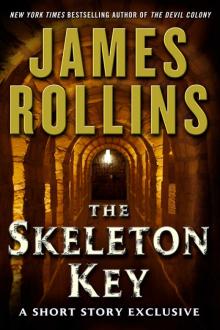 The Skeleton Key
The Skeleton Key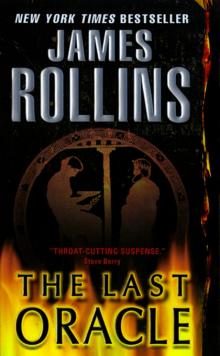 The Last Oracle
The Last Oracle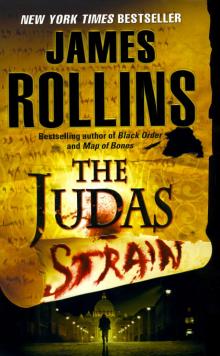 The Judas Strain
The Judas Strain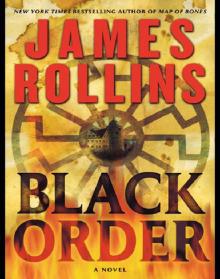 Black Order
Black Order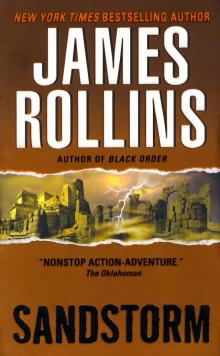 Sandstorm
Sandstorm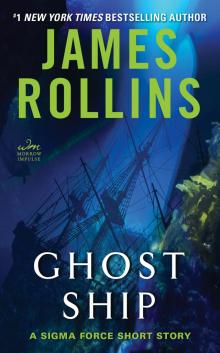 Ghost Ship
Ghost Ship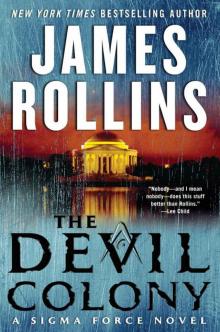 The Devil Colony
The Devil Colony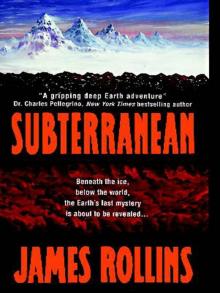 Subterranean
Subterranean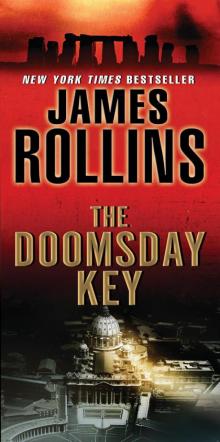 The Doomsday Key
The Doomsday Key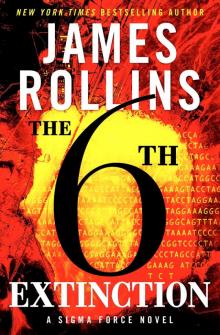 The 6th Extinction
The 6th Extinction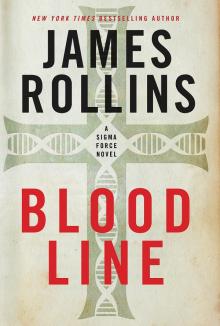 Bloodline
Bloodline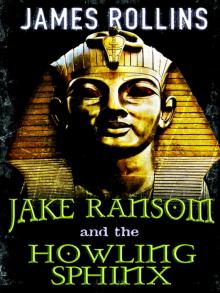 Jake Ransom and the Howling Sphinx
Jake Ransom and the Howling Sphinx The Midnight Watch
The Midnight Watch Map of Bones
Map of Bones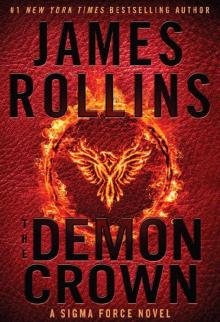 The Demon Crown
The Demon Crown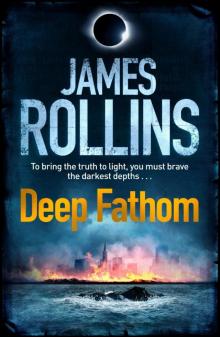 Deep Fathom
Deep Fathom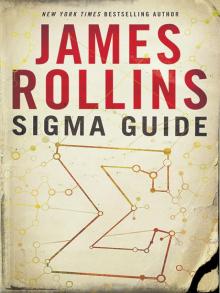 Sigma Guide
Sigma Guide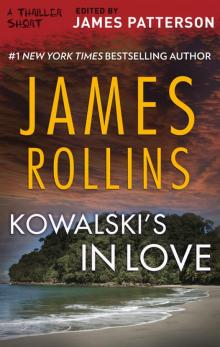 Kowalski's in Love
Kowalski's in Love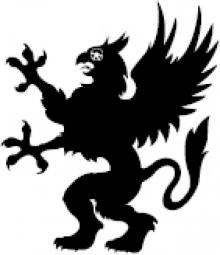 Jake Ransom and the Skull King's Shadow
Jake Ransom and the Skull King's Shadow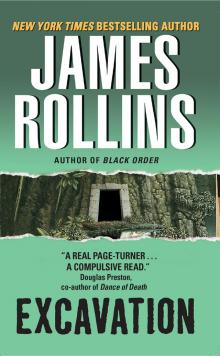 Excavation
Excavation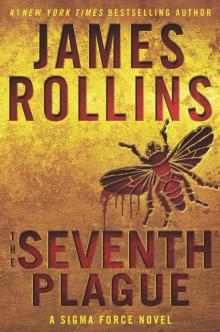 The Seventh Plague
The Seventh Plague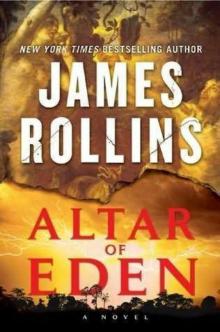 Altar of Eden
Altar of Eden Unrestricted Access: New and Classic Short Fiction
Unrestricted Access: New and Classic Short Fiction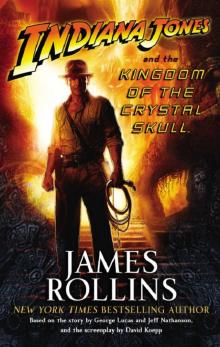 Indiana Jones and the Kingdom of the Crystal Skull
Indiana Jones and the Kingdom of the Crystal Skull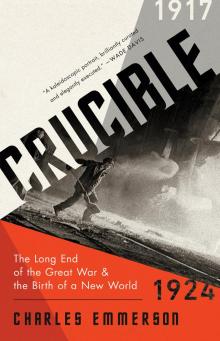 Crucible
Crucible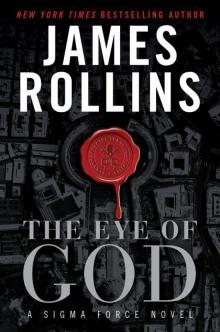 The Eye of God
The Eye of God The Bone Labyrinth
The Bone Labyrinth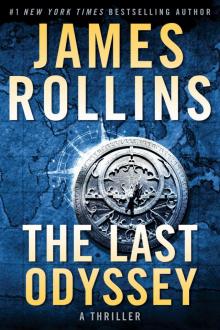 The Last Odyssey: A Thriller
The Last Odyssey: A Thriller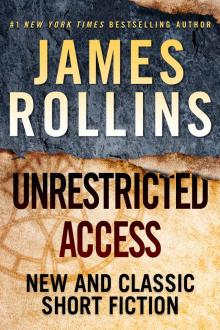 Unrestricted Access
Unrestricted Access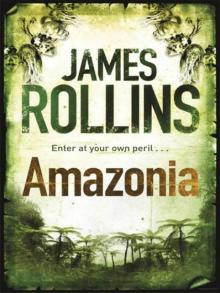 Amazonia
Amazonia Blood Brothers: A Short Story Exclusive
Blood Brothers: A Short Story Exclusive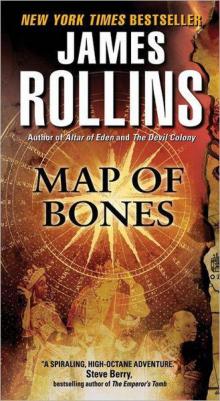 Map of Bones: A Sigma Force Novel
Map of Bones: A Sigma Force Novel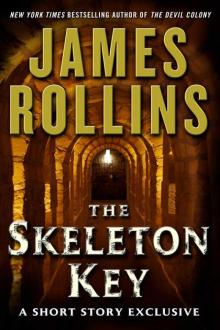 The Skeleton Key (sigma force)
The Skeleton Key (sigma force)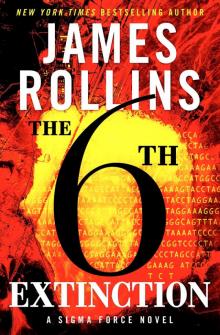 Sigma Force 10 - The Sixth Extinction
Sigma Force 10 - The Sixth Extinction Innocent Blood
Innocent Blood Map of Bones sf-2
Map of Bones sf-2 The Eye of God: A Sigma Force Novel
The Eye of God: A Sigma Force Novel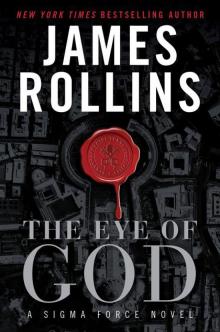 The Eye of God: A Sigma Force Novel sf-9
The Eye of God: A Sigma Force Novel sf-9 The Pit
The Pit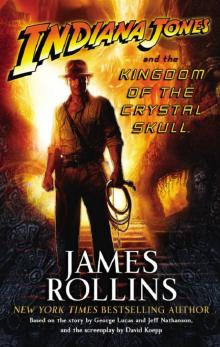 Indiana Jones and the The Kingdom Of The Crystal Skull
Indiana Jones and the The Kingdom Of The Crystal Skull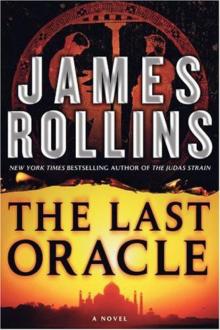 The Last Oracle (2008) sf-5
The Last Oracle (2008) sf-5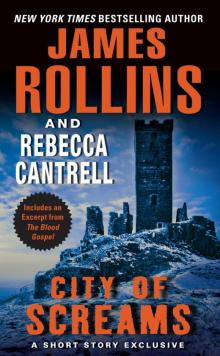 City of Screams
City of Screams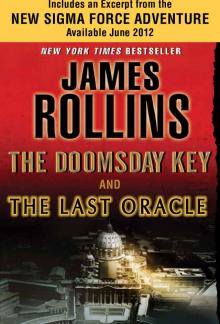 The Doomsday Key and The Last Oracle with Bonus Excerpts
The Doomsday Key and The Last Oracle with Bonus Excerpts The Judas Strain sf-4
The Judas Strain sf-4 Blood Infernal
Blood Infernal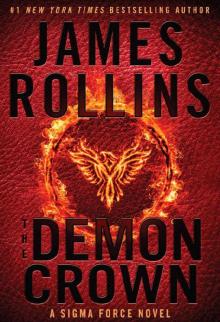 The Demon Crown: A Sigma Force Novel
The Demon Crown: A Sigma Force Novel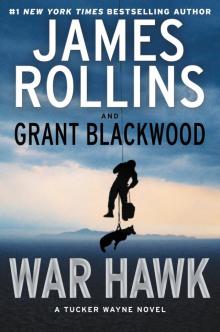 War Hawk: A Tucker Wayne Novel
War Hawk: A Tucker Wayne Novel SANDSTORM sf-1
SANDSTORM sf-1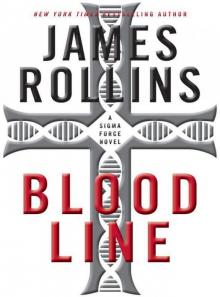 Bloodline: A Sigma Force Novel
Bloodline: A Sigma Force Novel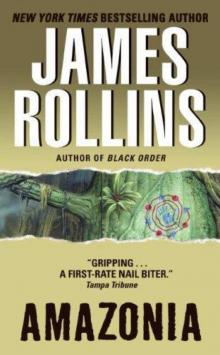 Amazonia: a novel
Amazonia: a novel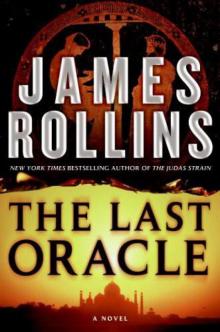 The Last Oracle: A Sigma Force Novel
The Last Oracle: A Sigma Force Novel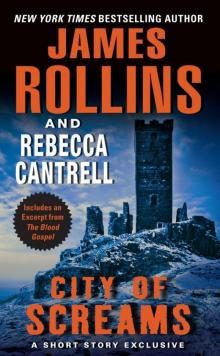 City of Screams (the order of the sanguines)
City of Screams (the order of the sanguines)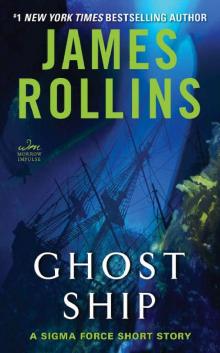 Ghost Ship: A Sigma Force Short Story
Ghost Ship: A Sigma Force Short Story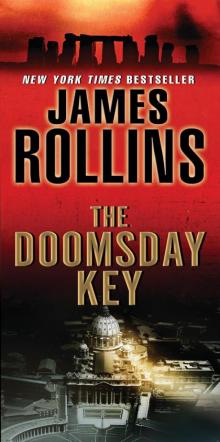 The Doomsday Key: A Sigma Force Novel
The Doomsday Key: A Sigma Force Novel